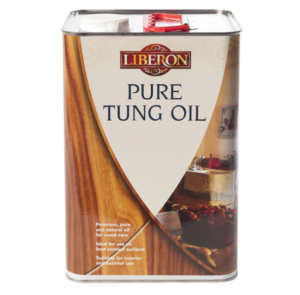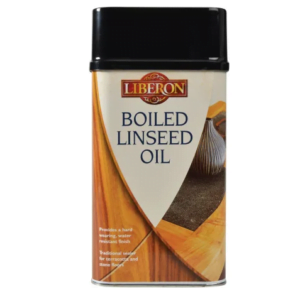The whole purpose of an axe handle is to deal with the shock of swinging that axe head as hard as we can against a tree or log without having the handle snap in half!
Naturally this is achieved by using a quality wood to begin with (American hickory, Ash). Expertly honed by master craftsmen using centuries-old techniques to produce a beautifully shaped handle.
No matter how well made, an axe handle left unprotected and exposed to the elements will eventually end up like a weathered stick you’d find in the forest. A once strong, healthy piece of wood quickly becomes withered, dried out and useless if we don’t look after it.
There are many ways to protect your axe handle from the elements. An array of waxes, lacquers, varnishes and oils can be used to seal the wood grain, repel moisture, improve grip and maintain or enhance the natural appearance of the wood.
TABLE OF CONTENTS:
What is the best finish for an axe handle?
Oil is the most versatile of protection for an axe handle. Wax is easier to apply but won’t last anywhere near as long. Lacquer and varnish provide a surface coating that misses the point of having a wooden handle.
And the ultra smooth surface is not ideal for an axe handle from a safety perspective. Overly smooth handles also tend to cause blisters so for a real wood feel and a superior grip, oil is the best finish for axe handles.
Which oil is best for axe handles?
The best oil to use for treating axe handles is pure Tung Oil. Proper application will fully saturate the wood to provide complete waterproof protection for your axe handle. It also outlasts Boiled Linseed Oil, ages better and the finish is harder but still maintains flexibility.
The downside is you need to apply more coats, it takes a LOT longer to cure and it’s more expensive. If you have the time and patience to treat your axe handle with pure Tung Oil, you’ll get a better finish that you’ll get with any other drying oil.
Related Article: Is it better to oil or wax an axe handle?
The most common treatment for axe handles is Boiled Linseed Oil (BLO) because it is cheap, effective and dries relatively quickly. This oil works well enough for most but it is not a natural oil.
It contains metal compounds to speed up polymerization (drying time) and it can yellow with age. Although it provides a water-resistant coating, it has no waterproofing qualities and is not resistant to mildew.
Lets compare the characteristics of Tung Oil and Boiled Linseed Oil as a treatment for axe handles:
Tung Oil

Pure Tung oil is a drying oil that’s extracted from the seed of the Tung tree, which is native to China and some other Asian countries. This has been used for centuries as a water-resistant finish for boats which is a testament to its waterproofing properties!
Pure Tung oil is free of additives and chemicals making it a 100% natural oil that is environmentally friendly, easy to use, highly durable and provides a protective waterproof treatment that cures to a beautiful matt finish.
Your axe handle will still feel like wood when you’re done – no glossy coat, but the surface will repel water like nothing on earth!
How long does Tung Oil take to dry on wood?
Your first coat of Tung oil should be left for at least two days before you re-apply. This will ensure the SURFACE is dry enough to continue with your additional coats.
You need to be sure the previous coat is thoroughly dry before you add the next one. A minimum of 6 coats is normally required, and once this is complete you should leave the axe to fully dry for around 30 days before use.
Yep, you read that correctly – you’re looking at almost 45 days to finish treating your axe handle! That’s what puts people off using Tung oil, folks. But… this will last FOR YEARS!
How do you make Tung Oil dry faster?
As with most drying oils Tung oil CAN be thinned with paint thinner, mineral spirits or citrus thinner to assist with penetration of the wood – actually it is recommended you do this with the first few coats of Tung Oil, with each subsequent coat thinned less and less. The last two coats should be applied neat.
But really this won’t speed up the drying process much at all. If you want the superior protection and finish of pure Tung Oil, you’re just gonna have to be patient, okay?
How to apply Tung Oil to an axe handle?
- Sand or scrape the existing coating (if any) off the handle. Sand down with a 220 grit sand paper to ready the surface.
- Once smooth, lightly dampen the surface with water by using a damp cloth – This will raise the grain of the wood to ensure the oil gets deep into the fibers when we apply the oil. Leave to sit for an hour or until completely dry.
- Ideally, repeat this a couple of times until the grain no longer rises. Sand down until relatively smooth and we’re ready for the Tung Oil. Word of advice here: you don’t want your axe handle to be TOO smooth, we want to retain as much grip as possible for obvious reasons. A light sanding with 220 grit in between, just enough to smooth down the raised grain is fine.
- For the first coat, thin the Tung Oil with 70% solvent or citrus thinner to encourage as much penetration as possible.
- Using a latex or nitrile glove, or a brush if you prefer, rub the thinned Tung oil into the handle making sure you have thoroughly coated the whole surface. Remove any excess and let it sit for at least 2 days to dry.
Return regularly to wipe off any obvious pooling or wet patches of oil as it dries. Once dry, give it a light sanding with 220 grit to remove any roughness. You’ll know it has properly dried if sanding produces a fine dust. - Repeat step 5 using about 15% less thinners each time. The final two coats should be applied neat. Aim for at least 6 coats to ensure full saturation of the handle.
- You should refrain from heavy use until it has completely cured. Tung oil does not fully cure or harden until at least 30 days. Be patient… It’ll be worth it!
Boiled Linseed Oil (BLO)

Pure Linseed Oil is harvested from the dried, ripened seeds of the flax plant. It is a natural oil used to preserve and prevent deterioration of wood products, but the required drying time makes it an unviable option for most people.
In order to improve dying time, solvents and metal compounds are added to make it more user-friendly – this stuff is called Boiled Linseed Oil.
How long does Boiled Linseed Oil take to dry on wood?
You should leave your first coat of boiled linseed oil overnight before you re-apply. This will ensure the SURFACE is dry enough to continue with your additional coats.
You need to be sure the previous coat is no longer tacky before you add the next one. A few coats is normally required so once this is complete you should leave the axe to fully dry for a few days before use.
Depending on things like temperature, humidity and coat thickness, drying time may vary and Boiled Linseed Oil will actually take up to a few weeks before it has fully hardened or cured, but you’re safe enough to use the axe after it has dried for a few days.
How do you make Boiled Linseed Oil dry faster?
Boiled Linseed Oil has been produced specifically to reduce the drying time of raw linseed oil. But if you’re really pushed for time and you simply can’t wait to get get going, you can add more solvent to the mix to promote faster drying.
Add some turpentine or paint thinner to your oil to speed up the process. Not too much, mix 1:3 volume ratio of turpentine/paint thinner to Boiled Linseed Oil.
How to apply Boiled Linseed Oil to an axe handle?
- Sand or scrape the existing coating (if any) off the handle. Sand down with a 220 grit sand paper to ready the surface.
- Once smooth, lightly dampen the surface with water by using a damp cloth – This will raise the grain of the wood to ensure the oil gets deep into the fibers when we apply the oil. Leave to sit for an hour or until completely dry.
- Ideally, repeat this a couple of times until the grain no longer rises. Sand down until relatively smooth and we’re ready for the oil. A light sanding in-between to just smooth down the raised grain is fine.
- Using a latex or nitrile glove, rub the oil into the handle making sure you have thoroughly coated the whole surface. Remove any excess oil and let it sit overnight to dry. Once dry, give it a light sanding with 220 grit to remove any roughness.
- Repeat step 4 a couple of times, missing out the sanding before the last coat. Your handle should now have a vibrant color and a nice feel to it.
- Leave your oiled axe handle to fully dry for a few days before using.
Tip: The more oil you add to the handle, the tougher the protection, but too much can result in a sticky coating that you don’t want. Apply your coats of oil thinly and build it up. Three coats is ample for Boiled Linseed Oil.
Conclusion
Tung oil is by FAR the best finish for axe handles because it offers the ultimate protection from the elements. It provides a fully waterproof finish while maintaining the natural feel of a wooden handle.
Tung oil prevents mildew and does not go rancid like some other oils if left out in the sun or rain, and best of all, one application will last for years. If you take pride in your axe and want the best possible finish to keep the wood healthy and strong, Tung oil is the answer.
I hope this has answered some of your questions on Tung oil vs Boiled Linseed Oil for treating axe handles. Let me know in the comments if there is anything else you’d like to know and I’d be happy to help.

Leave a Reply